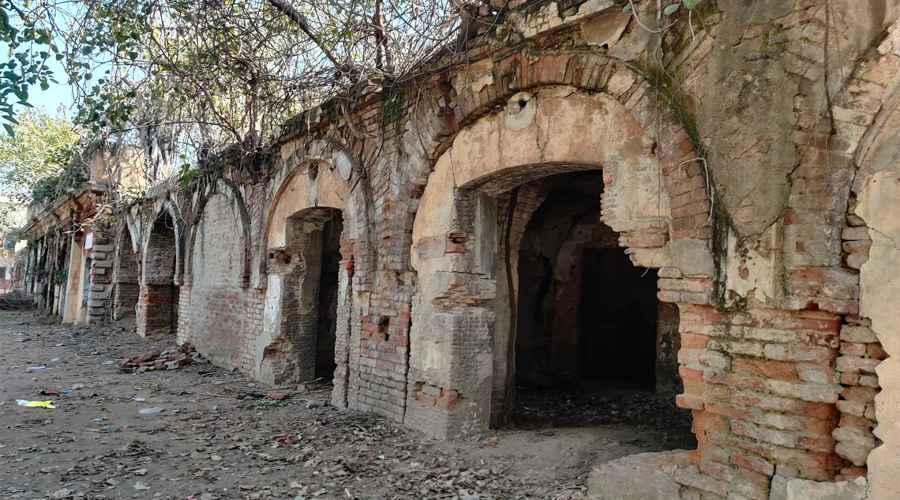In the bustling heart of India’s capital, Delhi, stands an imposing and historic monument known as Purana Qila or the Old Fort. As one of the oldest forts in Delhi, Purana Qila not only embodies centuries of the city’s diverse history, but also stands as a testament to architectural ingenuity and cultural synthesis. Its walls have witnessed the rise and fall of empires, ancient legends, and the melding of artistic traditions that define Delhi’s rich past.
Historical Background
Purana Qila’s origins are steeped in history and mythology. Local tradition holds that this very site is the location of Indraprastha, the legendary city of the Pandavas from the epic Mahabharata. Archaeological excavations have revealed evidence of continuous human settlement here spanning over two millennia, with artifacts dating back as far as the Mauryan period (4th century BCE). This layered history adds a profound depth to the fort’s significance.
The fort as seen today was constructed primarily in the 16th century by the Mughal Emperor Humayun (1533–1538) as part of his city Dinpanah, or “Refuge of Faith.” Following Humayun’s reign, the fort was completed and expanded by the Afghan ruler Sher Shah Suri, who ousted Humayun and ruled Northern India for a brief but impactful period. Sher Shah added many architectural elements that highlight the Indo-Islamic style and fortified the structure for strategic defense.
Also Read: What are the 7 Wonders of the World Names With Pictures
Architectural Splendor
Purana Qila covers a vast rectangular area with walls approximately 18 meters high and a perimeter of about 1.5 to 1.9 kilometers. Its robust and fortified walls were designed not only for defense but also to showcase imperial grandeur. The fort houses three monumental gates:
- Humayun Gate: The main entrance built by Humayun.
- Talaqi Gate: Noted for its unique design and strategic function.
- Bada Darwaza: The grand gate used for ceremonial purposes.
These gates feature red sandstone, intricate carvings, high arches, and overhanging balconies called jharokhas, amalgamating Hindu and Persian architectural motifs.
Inside the fort, two structures stand out:
- Qila-i-Kuhna Mosque: Commissioned by Sher Shah Suri in 1542, this mosque is a masterpiece of Indo-Islamic architecture, known for its symmetrical arches, magnificently carved sandstone, calligraphy, and dome design. It remains remarkably well-preserved, reflecting artistic finesse and spiritual significance.
- Sher Mandal: An octagonal, two-storied tower built by Humayun, originally serving as his library and observatory. This is historically significant as the place where Humayun suffered a fatal accident. The Sher Mandal’s elevated location offers spectacular views of the city.
The fort’s layout also included a large moat, historically filled with water channeled from the nearby Yamuna River, enhancing its defensive capability.
Archaeological and Cultural Importance
Excavations at Purana Qila have revealed stratified layers belonging to eight different historical periods, ranging from the Mauryan and Gupta ages to the Sultanate, Rajput, Mughal, and later periods. These findings include pottery, coins, tools, and remnants of ancient water management systems. Such discoveries enrich our understanding of Delhi’s urban evolution and underscore Purana Qila’s place as a continuous center of human civilization for over 2,500 years.
Purana Qila’s significance goes beyond architecture and archaeology; it represents Delhi’s cyclical history of conquest, survival, and synthesis. The fort bridges legends of the Pandavas with the Islamic cultural flowering under the Mughals, manifesting a unique blend of traditions that shaped northern India.
Present-Day Experience
Today, Purana Qila is a popular tourist attraction and a peaceful retreat amid Delhi’s urban hustle. The fort is surrounded by large Mughal-style gardens where visitors can wander through manicured lawns and water features. In the evenings, the fort hosts a captivating light and sound show narrating Delhi’s history, bringing to life stories etched in its stones.
The expansive grounds provide space for picnics, walking, and cultural events, making it accessible and enjoyable for families, history enthusiasts, and travellers alike.
Conclusion
Purana Qila stands as a monumental witness to Delhi’s colorful tapestry of history and culture. From its mythical origins to its 16th-century Mughal grandeur, the fort encapsulates the spirit of resilience and artistic brilliance. Its amalgamation of architectural styles, its archaeological richness, and its continuing role as a cultural hub make it an indispensable landmark in understanding India’s heritage. For visitors and scholars alike, Purana Qila offers a profound journey—not just through the stones and arches of a fort—but through the essence of Delhi itself, the timeless capital of empires.

